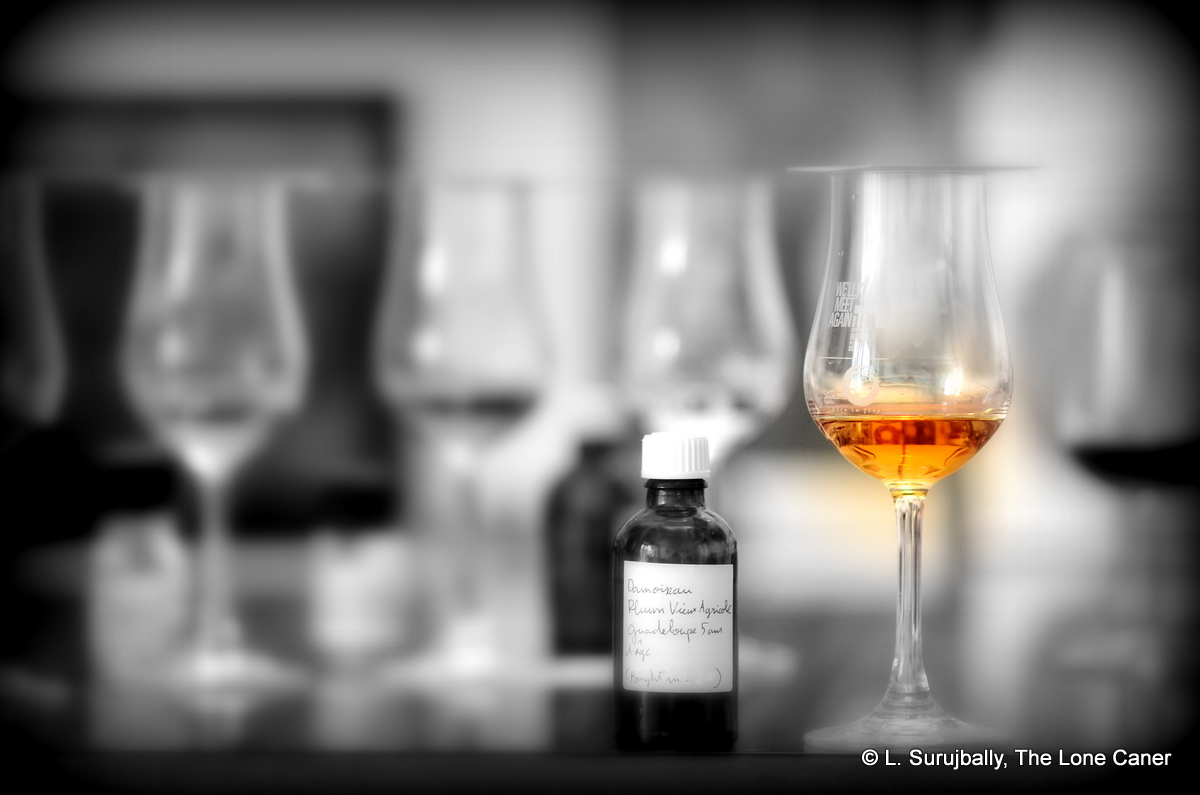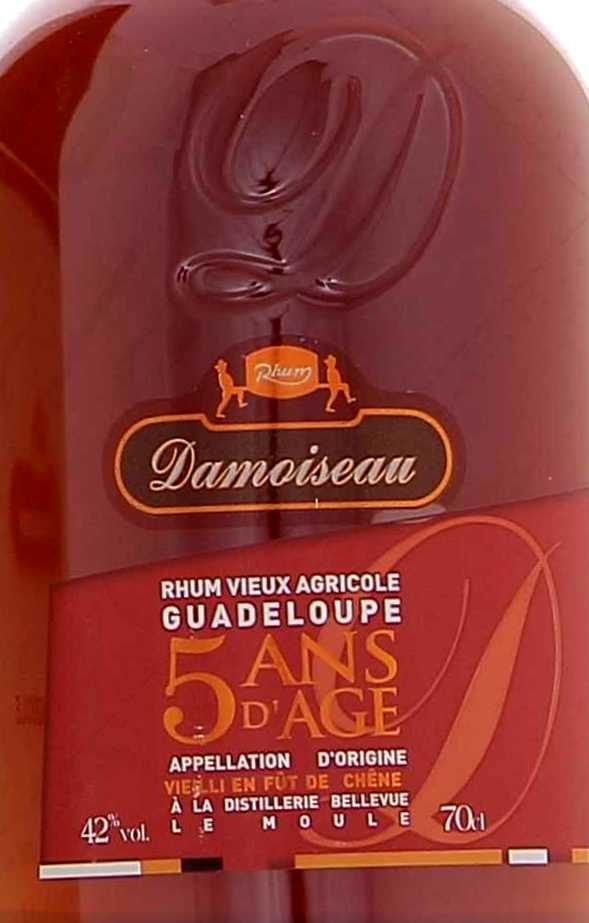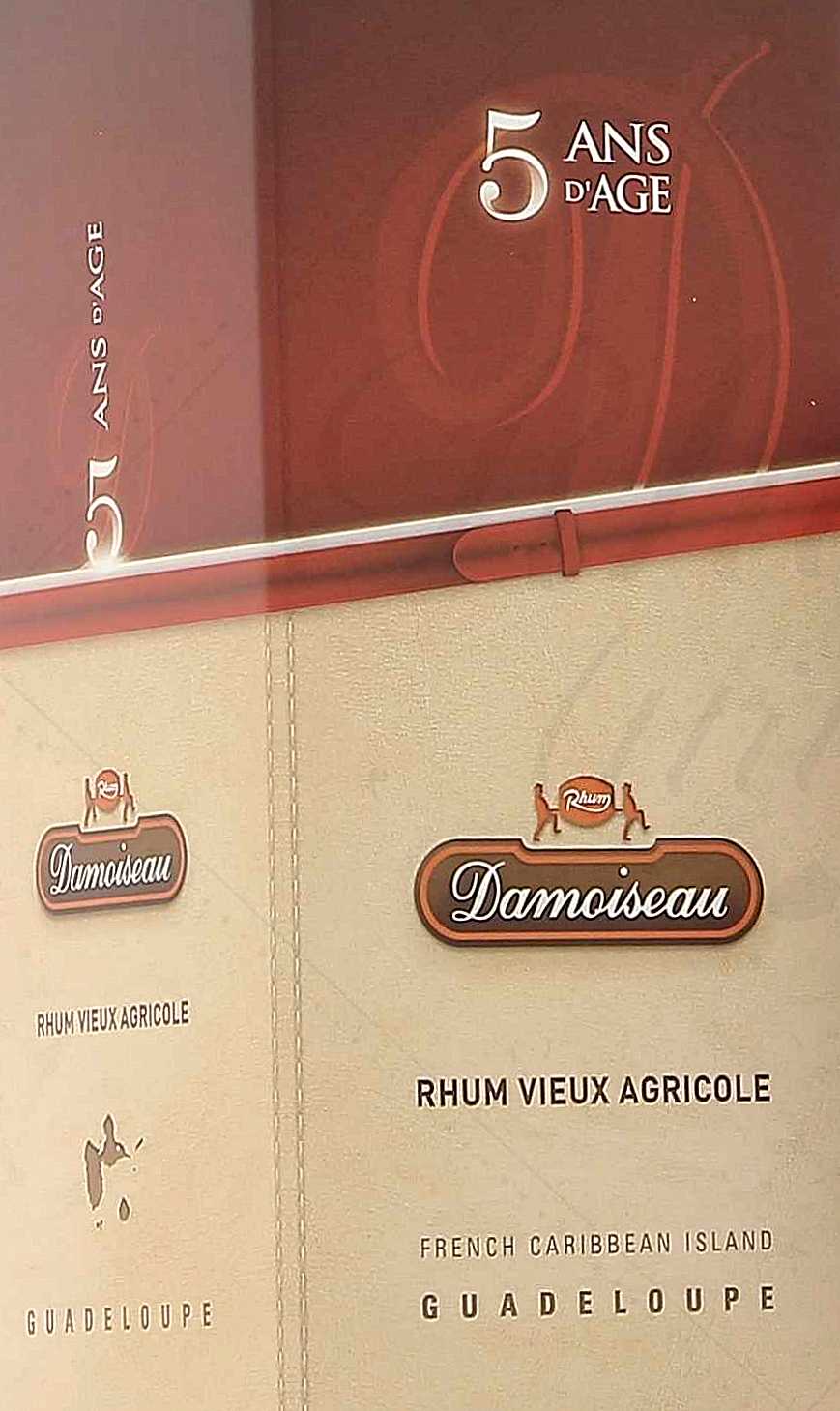
The French islands provide a reviewer with a peculiar problem when trying to pick a single rum as being a “Key” anything. This is largely because Martinique and Guadeloupe are almost alone in the world in possessing such a gathering of world-famous rum distilleries in such a concentrated geographical space (a comparison to Islay, say, is not entirely out to lunch). Several Caribbean islands have a single large distiller (St. Lucia, Trinidad) or two (Grenada) or a few (Cuba, Barbados, Jamaica), and Haiti of course comes up for special mention — but none have so many whose names resound through the rumiverse. So how to pick just one?
The selection of the first of what will be several candidates from the French islands – because to limit oneself just to one or two or even three is to do the entire subset of agricole rums an enormous disservice – is made even more difficult by the fact that Guadeloupe is not seen as a “pure” agricole maker. This is primarily because, of course, they sometimes mess around with both molasses and cane juice styles of rhum, and have never actively sought the AOC designation which so enhances the street cred of rhums from Martinique.

But even so, I like the rhums of Guadeloupe (Grande Terre and Basse Terre and Marie-Galante) — a lot. To me, the work of Gardal, Karukera, Bielle, Longueteau, Severin, Bellevue, Montebello, Pere Labat, Reimonenq, Capovilla and Damoiseau are as good as any the world over, and behind them all still reverbrates the majestic quality of Courcelles, the one that switched me on to agricoles all those years ago when the Little Caner was not yet the Big Caner and I was just getting serious about French island hooch.
So why start with Damoiseau? The easiest answer is to say “Gotta begin someplace.” More seriously, it’s certainly one of the better known brands from there, the leading producer on Guadeloupe; back in 2016 I remember Josh Miller awarding their white 55% first place in his agricole challenge; years before that, Velier gained confidence to issue more full proof rums by releasing their excellent 1980 version at 60.3% (the first such strong rum in their portfolio); Matt Pietrek suggested the Damoiseau 4 year old Réserve Spécial VSOP was a great rum to have for under US$45 and a good ambassador for the country’s rum-making tradition; and lastly, I simply have good memories of most of their work I’ve tried. But for me, the VSOP is a bit young and rough, and my affection is given to the very slightly older version which we shall get into without further ado.
Made from cane juice and then aged in ex-bourbon casks, Damoiseau has the occasional peculiarity (in my eyes, at least) of making aged rhums that don’t always or completely showcase the crisp herbal sweet grassiness we have come to associate with agricoles. Here, that isn’t the case at all…up to a point. The cane-juice-derived 5YO, which is near to standard strength (42% ABV) and therefore very approachable by those who want to dip their toes, is remarkably clean and yet still full-bodied for that strength. Immediately there is vanilla, a little oakiness, pears, prunes and the light notes of some pineapple slices. Also cane sap and sugar water, flavoured with a dusting of cinnamon. And, oddly, a nip of molasses, brown sugar and caramel in the background, which I can’t explain, but find pleasing nevertheless.

The palate isn’t quite as sterling as the nose, though still a cut above normal: a little thin, perhaps – blame it on the 42%, which is, let’s face it, somewhat lacklustre against the shining vibrancy of the whites, so often torqued up to 50%. The rhum tastes a little dry, a little briny, with vanilla, dates, prunes, blackberries and dark grapes leading in, followed by some florals, crisp oak notes, breakfast spices, cereals…and again, that strange hint of caramel syrup and molasses poured over fresh hot pancakes flitting behind all the other tastes. It’s a perfectly nice drink for all that, and the finish is a fitting conclusion: nice and long with oily, salty and tequila notes, to which are added light oakiness, vanillins, fruits and florals, nothing specific, nothing overly complex just the entire smorgasbord sailing into a serene conclusion.
Personally, I’d suggest that some extra strength would be useful, but by no means does that disqualify the Damoiseau 5 Year Old as a good all-rounder, equally at home in a mix of some kind or by itself. You can tell it’s been aged, it’s slightly sweet and has the requisite fruits and other flavours combining decently, and the rhum navigates its way between a light and heavy profile quite nicely. That slight touch of caramel or molasses was something I liked as well — if memory serves, it was a similar ”contaminant” that prevented the 1980 from being released as appellation-compliant and that was why it was sold to Velier, but whether in this instance that’s deliberate or my imagination is anyone’s guess. All I can say is that for me it was there, and it did not detract but enhanced.
So at the end, the 5YO ticks all the boxes we look for in such a rhum. Young as it is, it’s a tasty, unique product from Damoiseau; it’s of reasonable strength — and therefore doesn’t frighten those now moving out of their comfort zones and getting into different styles, with some stratospheric ABV or a profile of off-the-wall lunacy; and best of all for those who just want to nibble at its edges without biting the whole thing, the price point is right on the midpoint between two other candidates for the position. It’s slightly more expensive than the VSOP, but more elegant; and cheaper than the 8 YO but more versatile. Any of these three could be a rum that celebrates Guadeloupe, but for my money and what I want out of a rhum like this, the 5 YO is the one that nails it.
(#652)(83/100)
Going somewhat off topic, can I ask a question about your scoring ? This is a pretty good review and you scored it 83/100 yet in the wine world a wine rated 83 points would be considered paint stripper. A bronze medal for wines kicks in about 87 points, I think, with silvers starting at 90. So I guess my question is where does 83 for a rum compare on that scale ie would it be considered, say, a silver medal ? Is there an internationally recognised scale ? Again, apologies for going off topic, but whenever I see a score like 83 for a rum alarm bells go off in my wine brain and I have to remind myself that the rum in question got a great review.
This is a question that comes up quite regularly. Scoring was something I thought I could ignore (and did, once) but like many before and after, realized I needed to have some form of quantification
I score from 50-100 in a modified Parker scale and am roughly aligned to the the scoring methods used by Refined Vices, DuRhum, Rum Corner, Rum Howler, Barrel Aged Mind, Barrel Aged Thoughts and WhiskyFun (though he claims to be 0-100).
My score is built up from an aggregate of subscores that rate nose, palate finish and intangibles. On this basis, rankings are:
90 + : exceptional
85-89: excellent, special rums
80-84: quite good
75-79: better than average
70-74: below average
60-69: varying degrees of dislike
50-59: varying degrees of literal undrinkability
You cannot therefore use this scale to relate to wines. If 83 points is paint stripper for a wine, then the score floor has to be about 80. That’s too limiting for me. I prefer to work in general bands of quality, though I seem to be in a minority that way.
Too, I make no reference to other ranking schemes like medals, 5 stars, 10 points or whatever. My belief is that scores are a necessary evil allowing comparative rankings to be made, but to use them in isolation without reference to words is to miss points of interest or distinction that might make them worth buying even if technically they’re not entirely an unqualified success.
I also try to stay consistent comparatively – though not always with success. In other words, if I thought another Damoiseau was 88 points and this one is not as good, then this one must by definition rate lower. For what it’s worth, I ran this 5YO one against Trois Rivieres 2006-2014 55.5% Single Cask 8 YO, Savanna Lontan 2007-2014 6 YO 57% Grand Arome, Isautier L&C Isautier 5+15YO blend, Rhum Clemente “Cannes Bleue” 2014 50%, Rhum Negresco Very Old and it will rate consistently among those as well as my tasting memories of other Damoiseau and other rhums I’ve tried and remember.
No, there is no accepted or recognized international scale. I wish there was but even if it existed it would be meaningless, since the whole business of tasting is an intensely subjective and individual exercise. As a lover of words, I’m always going to say that the review tells the tale better than a numerical score ever could.
All good, thanks for the feedback. I was really just looking for a reference point/framework to help me get my head around a really good rum scoring ‘only’ 83 points. For what it’s worth I place more worth on the words too, rather than the score, but if the score is there it does beg the question. I do like how Rum Howler breaks his scores down into their component parts so you can see how he arrived at his final score.
At the beginning, I used provide the breakdown as well, but these days I just give the final and move on.